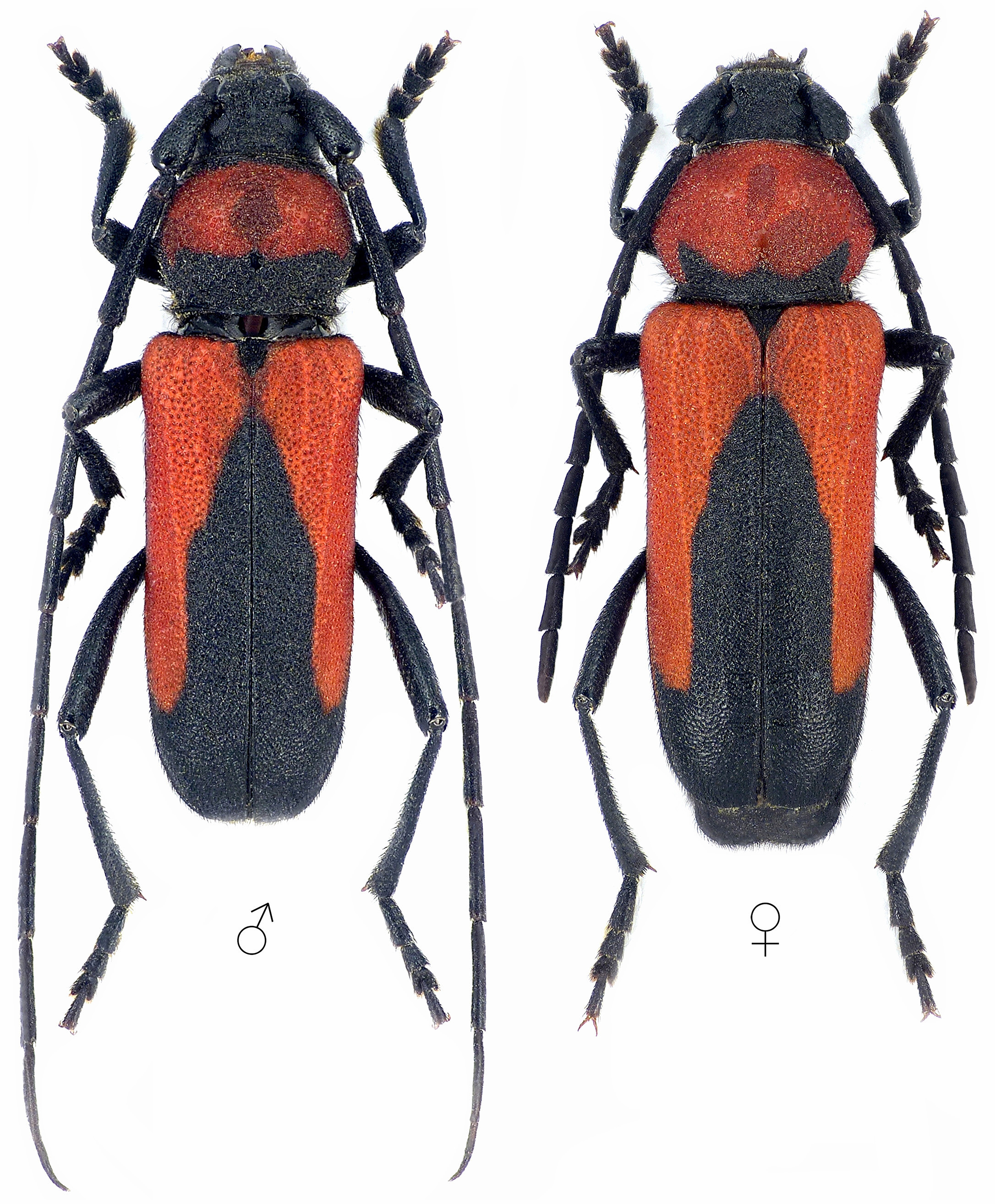Subfamilia: CERAMBYCINAE / Tribus: TRACHYDERINI

[Photo © David Navrátil]
Purpuricenus comenius, described by Janis Vartanis and Richard Ambrus from Peloponnese in 2015 [✧], is related to the species Purpuricenus graecus Sláma, 1993, from which it differs in size, body shape, colour of the pronotum and elytra, length and width of antennae, shape of their antennomeres, length and width of the legs, metatarsomeres and many other smaller differences. P. comenius develops in kermes oak (Quercus coccifera). Females lay egg on living twigs of the host tree, the newly hatched larvae feed subcortically and later dig a spiral girdle, which interrupts the sap circulation and eventually causes a twig to dry. Adults can usually be found flying around tree tops or sitting on the leaves of their host [✧].
Body length: ♂♂ 12 - 14 mm / ♀♀ 11 - 14 mm Life cycle: 2 - 3 years Adults in: June - July Host plant: kermes oak (Quercus coccifera) Distribution: an endemic species of Peloponnese peninsula (South Greece)
The depicted beetles were reared from larvae feeding in Quercus coccifera branches found in species type locality - Karyes (Καρυές) village environs (868 m a.s.l., Sparti, Laconia region, Peloponnese, Greece) on May 20, 2018.Collected by David Navrátil
[❖]
Vartanis J. and Ambrus R.:
A new species of the genus Purpuricenus Dejean, 1821 from Greece (Coleoptera: Cerambycidae).
Munis Entomology & Zoology Journal 10 (2): 315-318, 2015. [download]
| Subfamilia | Cerambycinae Latreille, 1802 |
| Tribus | Trachyderini Dupont, 1836 |
| Genus | Purpuricenus Dejean, 1821 |
| Species | Purpuricenus comenius Vartanis & Ambrus, 2015 |
